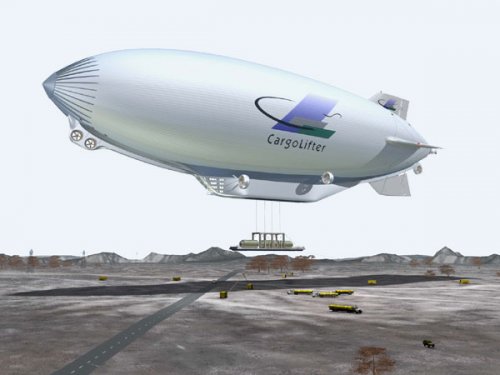


Airlander 10 as seen in flight over Cardington. The hybrid airship could split the difference at around 4 and a half hours. Another proposed route, from Barcelona to Palma de Mallorca, goes much the same way, 1 hour by jet, or 9 hours by boat. The Airlander 10 would complete the journey in an estimated 5 hours and 20 minutes. The former takes an hour on a conventional plane, or around 8 to 9 hours by ferry. One proposed route for a passenger service is the short hop from Belfast to Liverpool. Hybrid Air Vehicles have stated the Airlander 10 will be capable of carrying up to 100 passengers on short haul journeys, just over half of that carried by a modern single-row airliner. This is a significantly large area, and one that means finding a landing spot in many places could prove difficult. Additionally, while it is capable of landing on unprepared flat surfaces, Hybrid Air Vehicles state that a 600m diameter circle is required. The Airliner 10 is also large – at 91 meters long and 34 meters wide, it’s just as wide as a Boeing 737 and three times as long. The hybrid airship is only capable of a cruise speed of 148 km/h, far below the roughly 900 km/h of a modern jet airliner. There are drawbacks, of course, relative to more conventional air travel. An all-electric drive system is in development to further reduce emissions. The craft currently uses four diesel-powered ducted fans. The gentle take-off and landing characteristics also mean the vehicle doesn’t require traditional airport facilities, making it possible to operate more easily in remote areas, on grass, sand, or even water. The company’s own estimates suggest the Airlander 10 could slash emissions on short-haul air routes by up to 90%. Using helium for lift instead of solely relying on engine thrust and wings means that it is much more fuel efficient than traditional fixed-wing airliners.

Reportedly, it is capable of five days when manned, and even longer durations if operated in an unmanned configuration. However, it still maintains the capability to loiter for incredibly long periods in the sky as it needs to burn very little fuel to stay aloft. Chief among them is that as the Airlander 10 is heavier than air, it need not vent helium throughout flight to avoid becoming positively buoyant as fuel burns off, nor does it need to vent helium to land. The hybrid approach brings several benefits over the traditional airship model. Two further fixed ducted fans on the rear provide the primary propulsion for the craft. This lift can also be further augmented by two diesel-powered ducted fans on the sides of the airship, which can pivot to assist with takeoff and landing. The rest of the left is generated aerodynamically by air passing over the eliptical shape of the airship’s body. Instead, the vehicle uses the buoyancy from its helium envelope to create only 60-80% of its lift. The Airlander 10 is not a lighter-than-air craft like traditional airships. But is it enough to bring airships back to the skies? A Hybrid Technology Airlander 10 seen taking off during its first flight. Their vehicle that will do all this goes by the name of Airlander 10. The goal is to create cleaner air transport for short-hop routes, while also solving many of the issues with the airship concept with a drastic redesign from the ground up. Hybrid Air Vehicles are a UK-based startup working to create a modern take on the airship concept.

These days, they’re considered more of a historical curiosity rather than a useful method of transport.
#Cargolifter artist concepltion full
Slow, difficult to land, and highly flammable when they’re full of hydrogen.


 0 kommentar(er)
0 kommentar(er)
